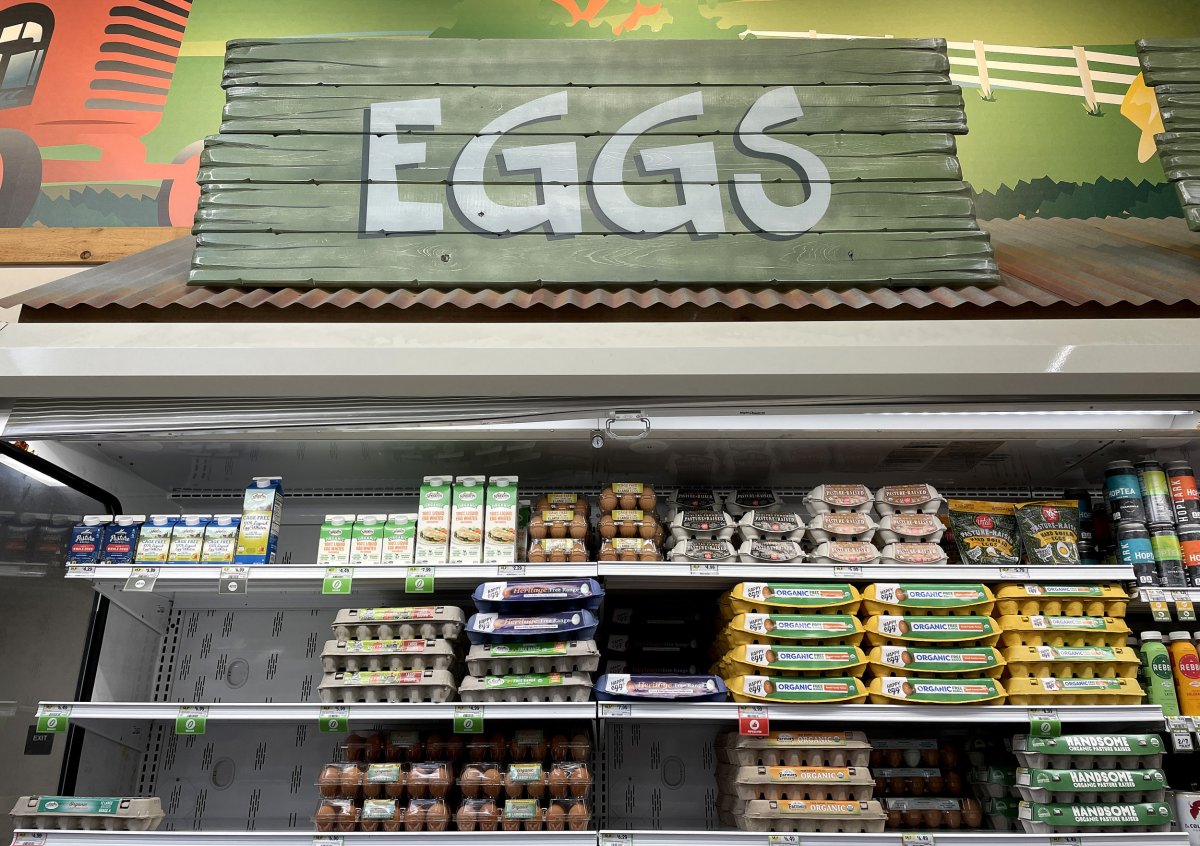-
Egg Prices Could Rise After Massive Texas Plant Shuts Down - April 4, 2024
-
A portion of Mulholland Drive, damaged by mudslides in winter storms, reopens - May 26, 2024
-
‘Maybe You Don’t Want to Win’ - May 26, 2024
-
Donald Trump Putting Law Enforcement in Danger: Attorney - May 26, 2024
-
Avoid the waters of these 5 L.A. County beaches this holiday weekend, public health officials say - May 26, 2024
-
Bawdy Comedy ‘Anora’ Wins Palme d’Or at Cannes Film Festival - May 26, 2024
-
Map Shows Heat Wave Zone Spread Into Five New States - May 26, 2024
-
Azusa police arrest suspected slingshot-wielding vandal - May 25, 2024
-
Donald Trump Hammers Judge Ahead of Jury Instructions - May 25, 2024
-
Sometimes U.S. and U.K. Politics Seem in Lock Step. Not This Year. - May 25, 2024
Egg Prices Could Rise After Massive Texas Plant Shuts Down
The price of eggs could shoot up after Cal-Maine Foods, one of the world’s largest egg producers, was forced to halt operations at its facilities in Texas due to detection of avian flu at the plant, a development that could impact supply and cost, an expert told Newsweek.
On Tuesday, Cal-Maine announced that the plant tested positive for avian flue (HPAI), which forced the halting of operations at its facility in Parmer County, Texas, and led to the “depopulation” of about 1.6 million laying hens and nearly 340,000 pullets. This amounts to 3.6 percent of the company’s flock as of March 2.
The stoppage could affect the supply and prices, though it’s unclear when the impacts may occur, according to Maurice Piteski, associate professor and poultry expert at UC Davis.
“If we have 300 million plus laying hens in the United States and we lose, you know, a little less than 1% of them. That’s that’s going to affect at some level supply and demand,” he told Newsweek. “That was a huge operation that got hit with the virus and just depopulating that many birds is going to take resources, time and energy to address.”

Justin Sullivan/Getty Images
The cease in operations may disrupt the supply and demand equation, Piteski said.
“That’s about as large a facility as we have in the United States and in the world. Once you get above a million hens or so, you know that those are very large commercial facilities. So that was not the ideal facility to get hit,” he said. “So if you lose a little less than 1 percent, that’s going to affect supply, which probably is going to increase price.”
Piteski added that other factors affect prices, like the cost of feed, and eggs also tend to be seasonal in their costs. During the Easter period, which just passed, demand is high and prices tend to go up as well, he said.
Other experts echoed that the facility hit with the avian flu infection was substantial but cautioned against extrapolating that prices may rise during the time that it ceases operations.
“It is a big farm. 1.6 million egg laying chickens is a lot of chickens. But, in the big picture, that is less than 1 percent of the egg laying chickens in the U.S., (0.5 percent),” David P. Anderson, professor and livestock economist at Texas A&M University, told Newsweek in an emailed response to a question.
“With that small of a cut in the number of chickens, I would not expect much in the way of higher prices. A quick, back of the envelope estimate might be 2 cents per dozen or so. So, we might not even notice it,” he added.
Anderson suggested that it may take a while to replace the chickens at the farm and clean the facility and noted that Cal-Maine had said that they were looking to mitigate reduced production by getting supplies from its other facilities.
He went on to say that the market is in a much better position to withstand the disruption in production.
“Recently, the U.S. has been producing more eggs than a year ago. The number of egg laying chickens is larger and productivity is up, meaning more eggs per 100 chickens,” Anderson told Newsweek. “On the good side, we have much lower feed costs than a year ago and that is helping egg farm profits and leading them to boost production.”
Prices are down compared to a year ago, he noted.
“Wholesale average egg prices last week were $2.48 per dozen compared to $3.47 last year at this time. Prices had been trending lower over the last few weeks,” he noted.
Maro Ibarburu, associate scientist and business analyst at the Egg Industry Center at Iowa State University, lamented that another facility had been hit by HPAI. He echoed that in the large picture, the supply affected was relatively small and that the timing of the infection could help limit the impact on prices.
“Egg demand naturally drops right now because we are past the Easter holiday. These two factors indicate that the U.S. egg market should remain fairly steady during this time,” he told Newsweek in an emailed comment.
Cal-Maine, which reported its financial results on Tuesday, revealed that sales fell in the third quarter of fiscal 2024 to a little over $700 million compared to nearly a billion dollars in the same period last year, on the back of declining prices.
“The decline in sales revenue for the third quarter of fiscal 2024 was primarily due to the significant decrease in egg prices compared to a year ago,” Max Bowman, vice president and chief financial officer at Cal-Maine Foods, said in a statement. “However, market prices moved higher sequentially in the third fiscal quarter due to both the recent impact of HPAI and normal seasonal fluctuations.”
He pointed out that the net average selling price of eggs per dozen was about $2.15 for conventional eggs during the period, down 41.5 percent from the quarter last year. Specialty eggs sold at $2.42 per dozen compared with $2.62 for the third quarter of fiscal 2023. Net average selling price per dozen eggs was $2.25 compared to $3.30 a year ago.
Newsweek contacted Cal-Maine Foods for comment via email on Wednesday.
Uncommon Knowledge
Newsweek is committed to challenging conventional wisdom and finding connections in the search for common ground.
Newsweek is committed to challenging conventional wisdom and finding connections in the search for common ground.
Source link































